Best tubeless road tyres 2024 | Ditch your inner tubes with these tubeless options
The best tubeless road bike tyres promise puncture protection, improved ride quality and lower rolling resistance.
Although tubeless is used more widely on gravel bikes and mountain bikes, most of the latest, higher-end road bike tyres are tubeless.
The same goes for wheelsets. From the middle of the range upwards, almost all new road bike wheels are tubeless-ready.
The BikeRadar team has used road tubeless tyres for as long as they have been around, and this list includes the best tubeless road tyres we've ridden and reviewed.
You can jump to our tubeless road tyre buyer's guide to find out more about this increasingly popular technology.
Best tubeless road tyres 2024, as rated by our expert testers
Continental Grand Prix 5000 S TR
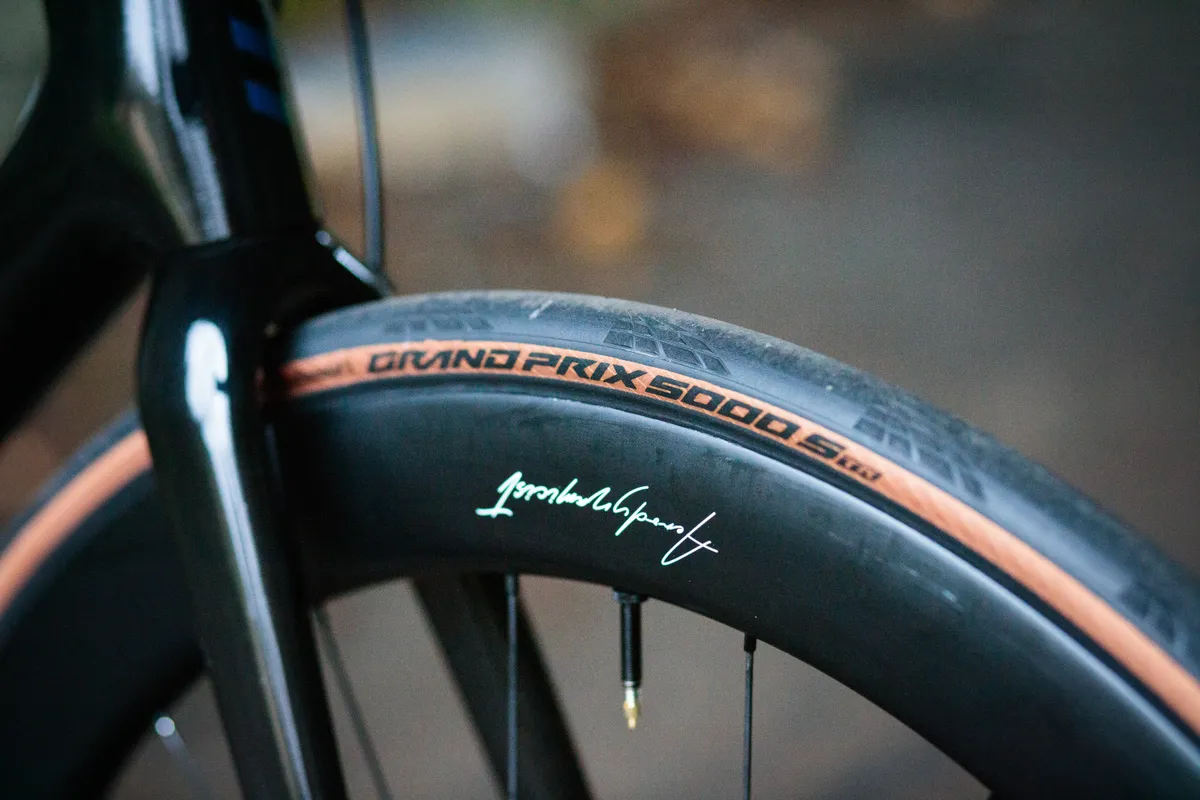
- £69.95 / €89 / $92 / AU$133 as tested
- Pros: Perfect balance between performance and usability
- Cons: 20 per cent faster claim doesn't hold up to scrutiny
The Continental GP5000 S TR replaced the GP5000 TL as the brand's top-end tubeless race tyre in late 2021.
In testing, we have found the tyre to be every bit as fast as the outgoing tyre (though we didn't find Continental's "20 per cent faster" claim to hold up to scrutiny) while now also being hookless compatible.
The tyre is also claimed to be more puncture-proof than the outgoing model.
If you want a great all-round tyre for fast riding, you're very unlikely to be disappointed with these.
WTB Exposure
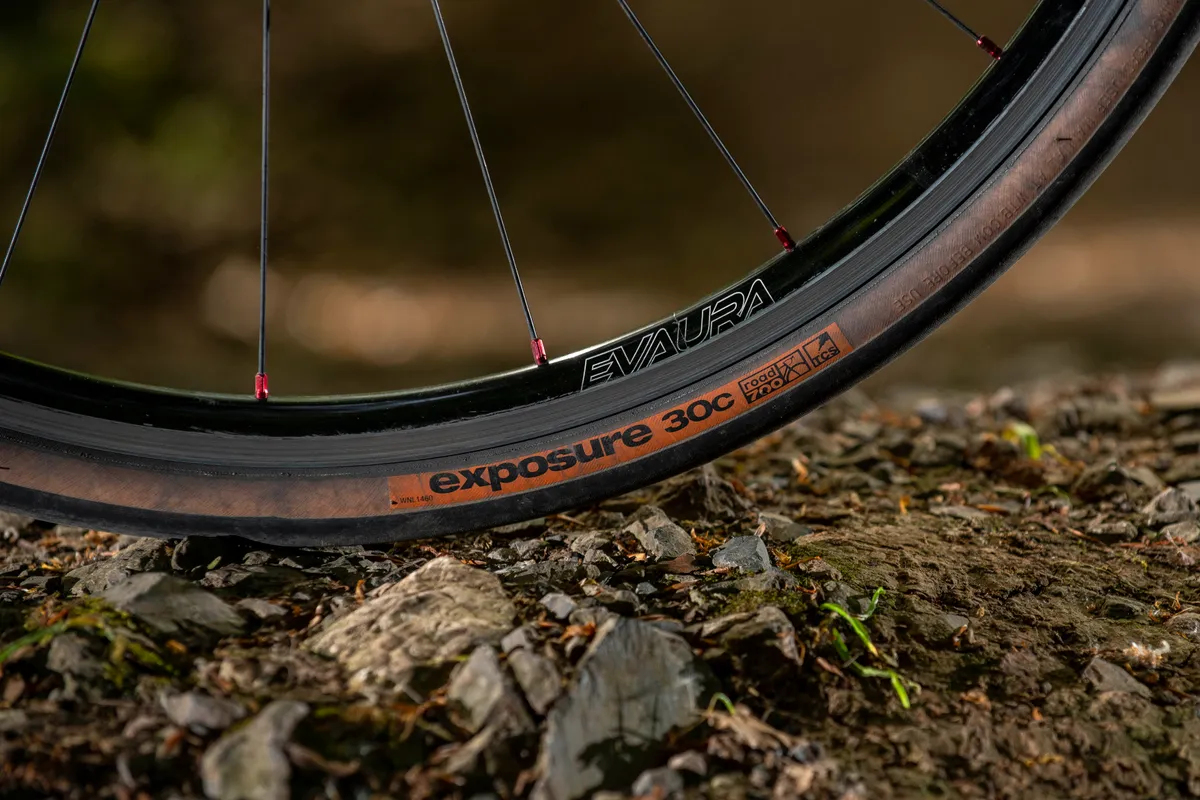
- £49.99 / €54 / $55 / AU$80 as tested
- Pros: Easy to set up; handy 30mm and 36mm widths
- Cons: Potentially leaky sidewalls; no narrow options
Over our 2,300km of testing, we came to love the 30mm WTB Exposure tyres for their supple ride quality and durability. They were easy to set up, too.
The Exposure is one of few tubeless tyre options that sits in the space between 28mm and 32mm-plus widths, offering a touch more comfort and control while still fitting comfortably in many newer frames.
Weight is 305g and there’s enough grip for some light off-road action. There’s a 36mm option available if your bike can handle the width, and you can choose from black or tan sidewalls.
If you want a wide and versatile tubeless road tyre, this is a great option, but if you’re after a narrower option you’ll need to look elsewhere.
Bontrager R3 Hard-Case Lite TLR

- £50 / $65 / AU$70 as tested
- Pros: Lightweight; great performance
- Cons: Only the 32mm width is tubeless
Trek has been pushing the envelope on tyre widths, with its Domane endurance road bike clearing tyres up to 38mm.
This is reflected in its tyre range, with the R3 Hard-Case Lite TLR initially only available in a 32mm width, but with 25mm and 28mm options now added alongside it.
Despite the 32mm width of the tyres we tested, the Hard-Case Lite tyres are indeed light at under 320g, undercutting some top-rated 28s, but retain good sidewall support and stability.
They roll fast and grip well in the wet or dry, handling broken tarmac with aplomb.
Continental Grand Prix 5000 TL
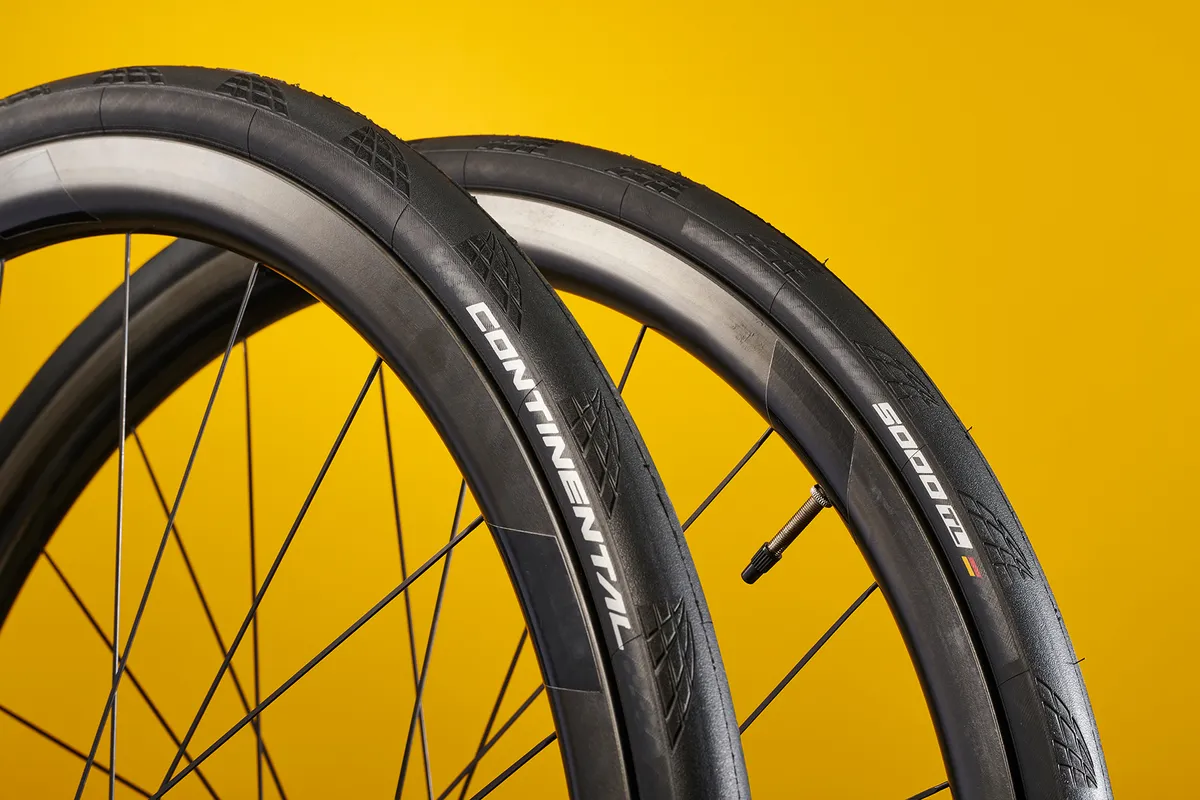
- £66 / €75 / $87 / AU$119 as tested
- Pros: Excellent ride quality; good grip
- Cons: On the expensive side
Though it has been officially replaced by the aforementioned GP5000S TR, the original GP5000 TL is still widely available and is well worth considering if you can pick a pair up on the cheap.
Though you lose out on hookless compatibility and a claimed increase in puncture protection, the GP5000 TL is roughly as fast as the new tyre, so is unlikely to hold you back on fast rides.
Schwalbe Pro One TLE

- £68.49 / €69.90 / $81 as tested
- Pros: Fast and versatile road tyre
- Cons: Pricey
The original Pro One was one of the first tubeless road tyres to be launched and this version – released in 2019 – is claimed to be faster, grippier and lighter than its predecessor.
Available for 700c wheels in 25mm, 28mm and 30mm widths, our test 28mm Pro Ones came in under Schwalbe’s published 270g weight.
After 1,300km of testing, including a fair amount of light gravel, they’ve proved robust and puncture-free. They feel fast and can handle low pressures, although they’re a bit more pricey than some alternatives.
There’s also a flagship tubeless 25mm Pro One TT variant, weighing in at around 205g, but that forgoes puncture protection.
Pirelli P Zero Race TLR
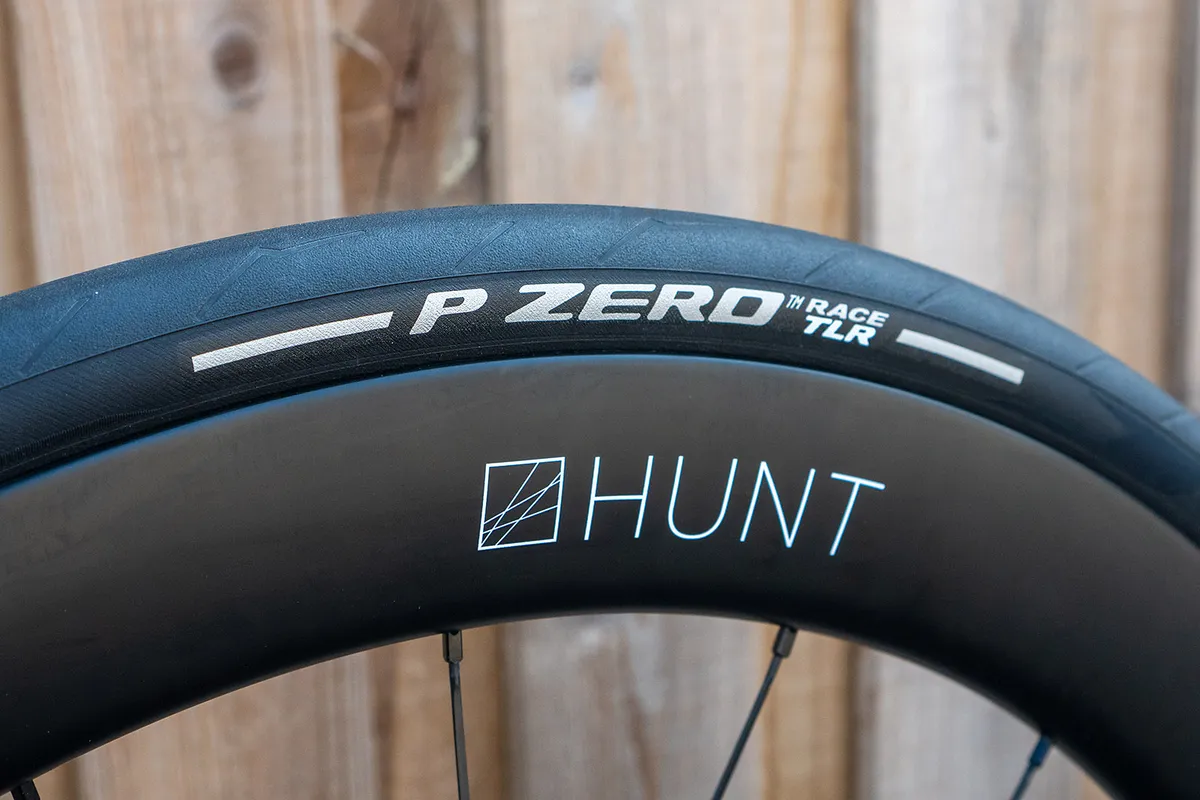
- £79 / $100 / €85 / AU$140 as tested
- Pros: Very fast; comfortable; easy to fit
- Cons: Relatively heavy
The Pirelli P Zero Race TLR topped our rolling resistance lab test of fast tyres, but speed isn't its only attribute.
The Italian brand's premium tubeless road bike is easy to install and leaks little air. On the road, it has grip and puncture resistance to go with plush ride quality.
But if weight's a concern for you, the P Zero Race TLR isn't the lightest despite measuring up small when mounted.
Cadex Race

- £65 / €80 / $100 / AU$125 as tested
- Pros: Fast-rolling with supple ride quality; compatible with hookless rims
- Cons: Not the lightest
Coming from Giant’s performance component brand Cadex, the Race is its top performance road tyre. There’s a single-layer 170 TPI casing to improve suppleness and reduce rolling resistance, and proprietary puncture protection and a rubber compound.
Tubeless setup was hassle-free, needing just a floor pump and a single tyre lever to ease the bead over the rim. They're fully compatible with hookless rims too, and the tight seal led to minimal air loss over a week.
The Cadex Race copes well with rougher road surfaces and there’s good support at lower pressures, as well as predictable handling. A shallow herringbone tread pattern adds some extra grip on gritty roads. The only downside is that at 331g for a 700 x 28mm tyre they're not the lightest.
Goodyear Eagle F1 R
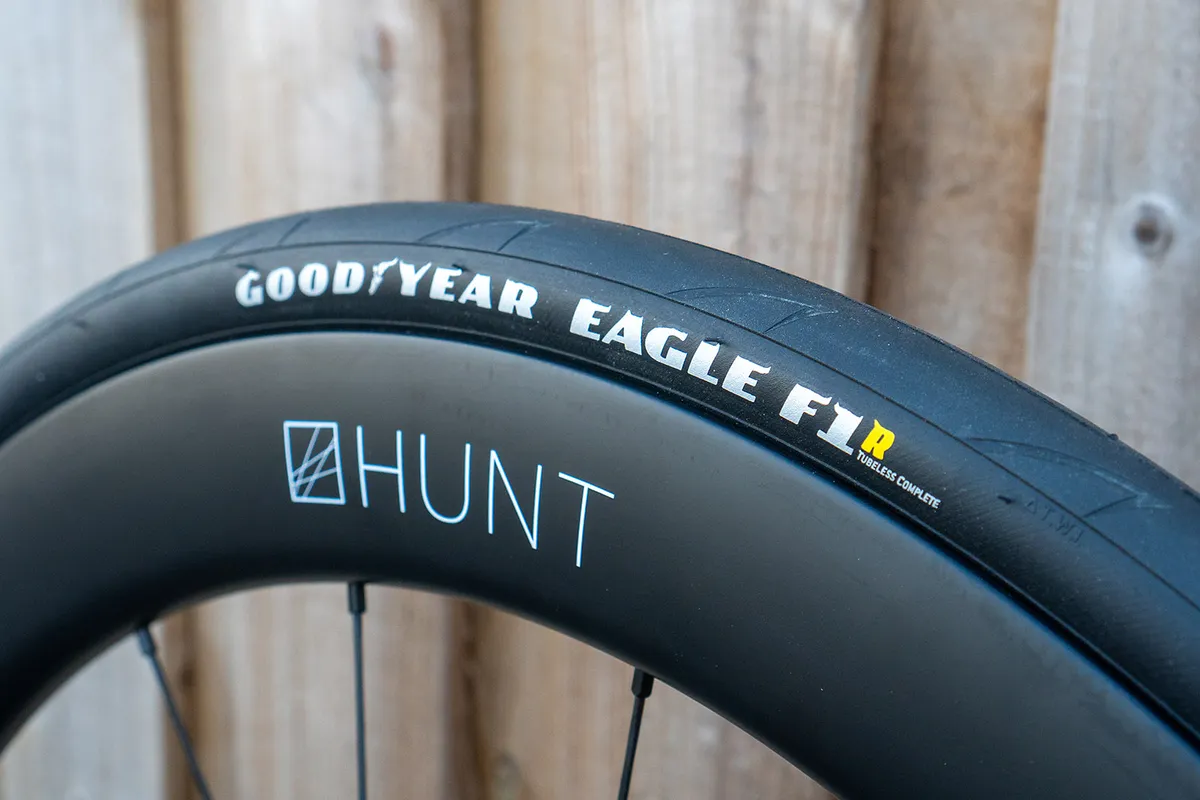
- £65 / €70 / $80 as tested
- Pros: Impressive ride quality; good air retention
- Cons: Dull feeling compared to competitors
The Goodyear Eagle F1 R is the American brand's new do-it-all performance tubeless road bike tyre. But it doesn't soar to the same five-star heights as its predecessor, the Goodyear Eagle FI Tubeless.
Compliance, air retention and value for money are all good though. The Goodyear Eagle F1 R fared well against competitors in a tyre rolling resistance lab test we carried out.
However, the Eagle F1 is fairly weighty and it feels relatively leaden beneath you.
Hutchinson Fusion 5 Performance 11Storm TLR
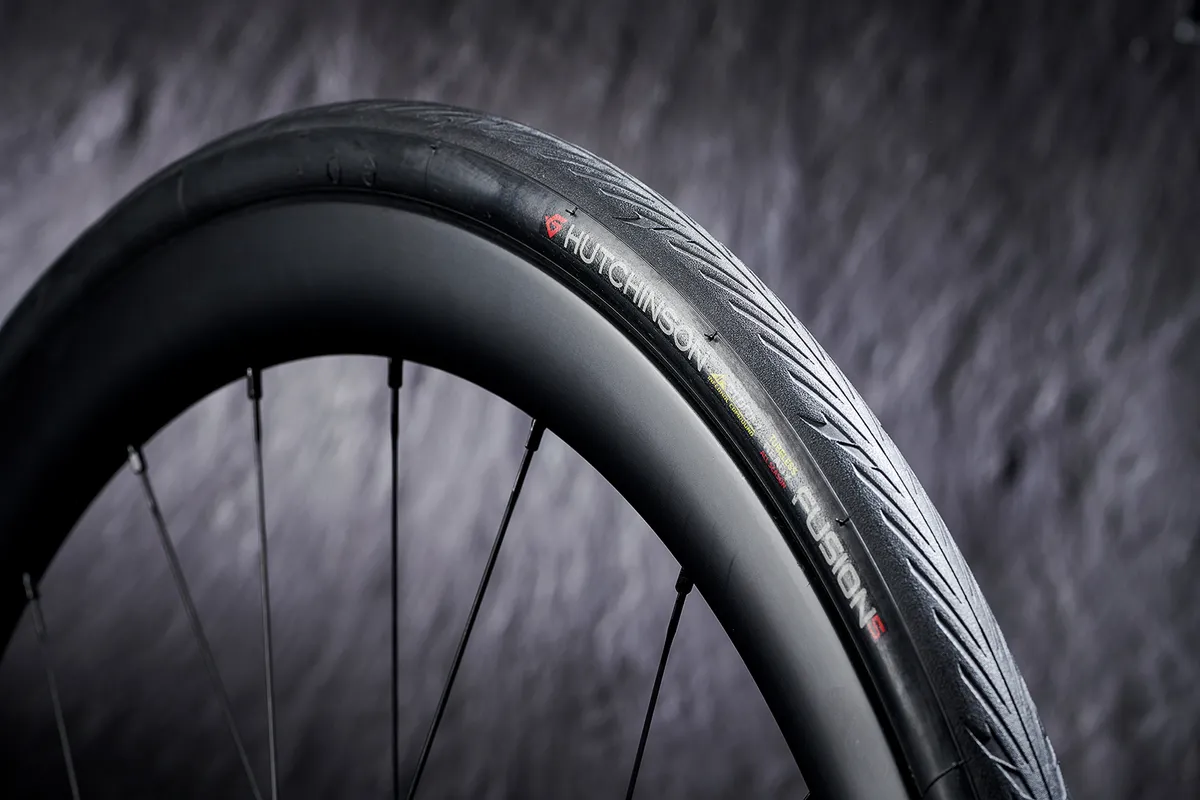
- £41 / €49 / $49 / AU$72 as tested
- Pros: Easy to fit; good price
- Cons: Don't like low pressures
Hutchinson was a pioneer of road tubeless and the Fusion 5's ease of installation shows that experience.
We got our test set mounted without needing any tyre levers and the beads seated with just a track pump, but air retention was still good.
The Fusion 5 Performance uses the brand’s 11Storm silica-rich rubber compound, which, according to Hutchinson, has been independently proven to be softer and gripper than its predecessor. There’s a 127 TPI casing for good comfort over bumpy roads, though it's not the supplest or fastest tubeless tyre we've tested.
Our testing showed the tyre pressure needs to be monitored more closely though, because they don’t like pressures below Hutchinson’s 74psi recommended minimum for the 700 x 28mm size.
Maxxis High Road HYPR K2
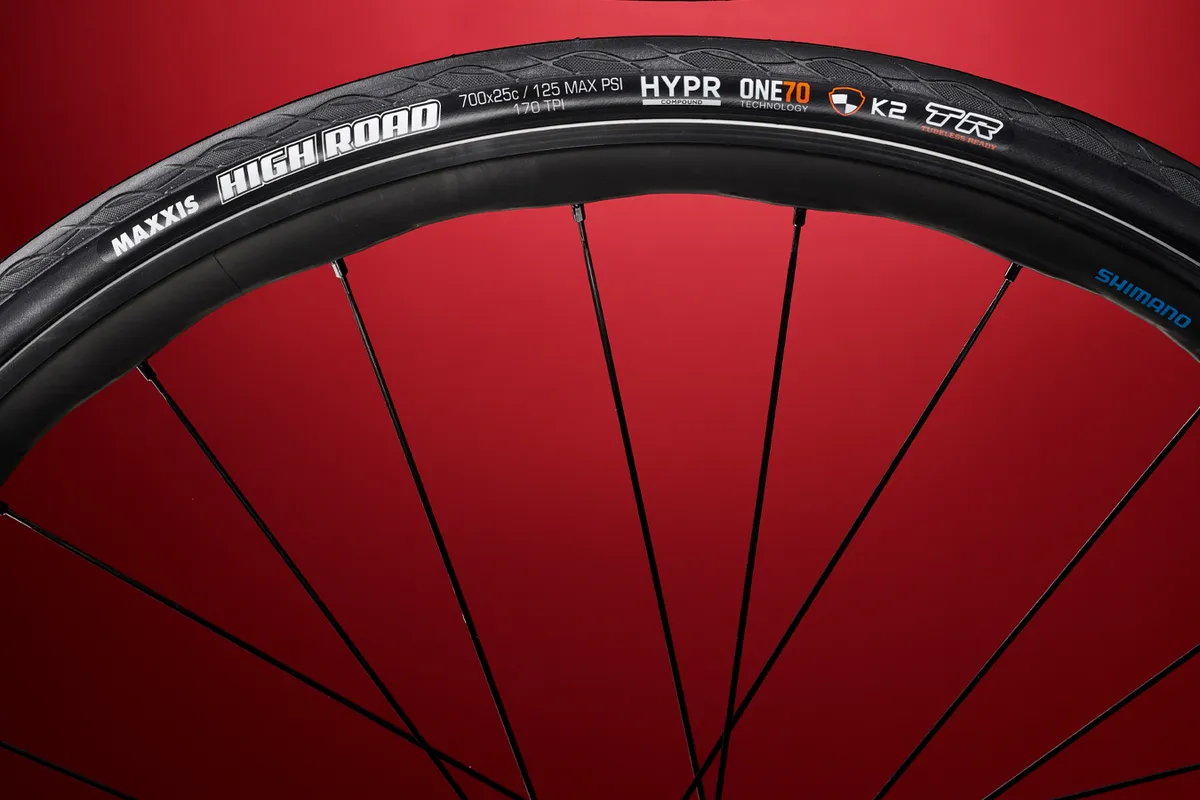
- £55 as tested
- Pros: Good grip; fast-feeling race tyre
- Cons: Increased weight due to tubeless tech
Maxxis says the Highroad HYPR K2 is its best road race tyre, with its HYPR rubber compound lowering rolling resistance and improving wet grip.
We weighed the 25mm tyre at 290g, although that’s 80g more than the non-tubeless option. Fitting was easy with a track pump and the tyre sealed easily to the rim. It’s also available as a 28mm tyre.
We found great straight-line speed and fast acceleration paired with progressive grip when cornering.
Michelin Power Cup TLR
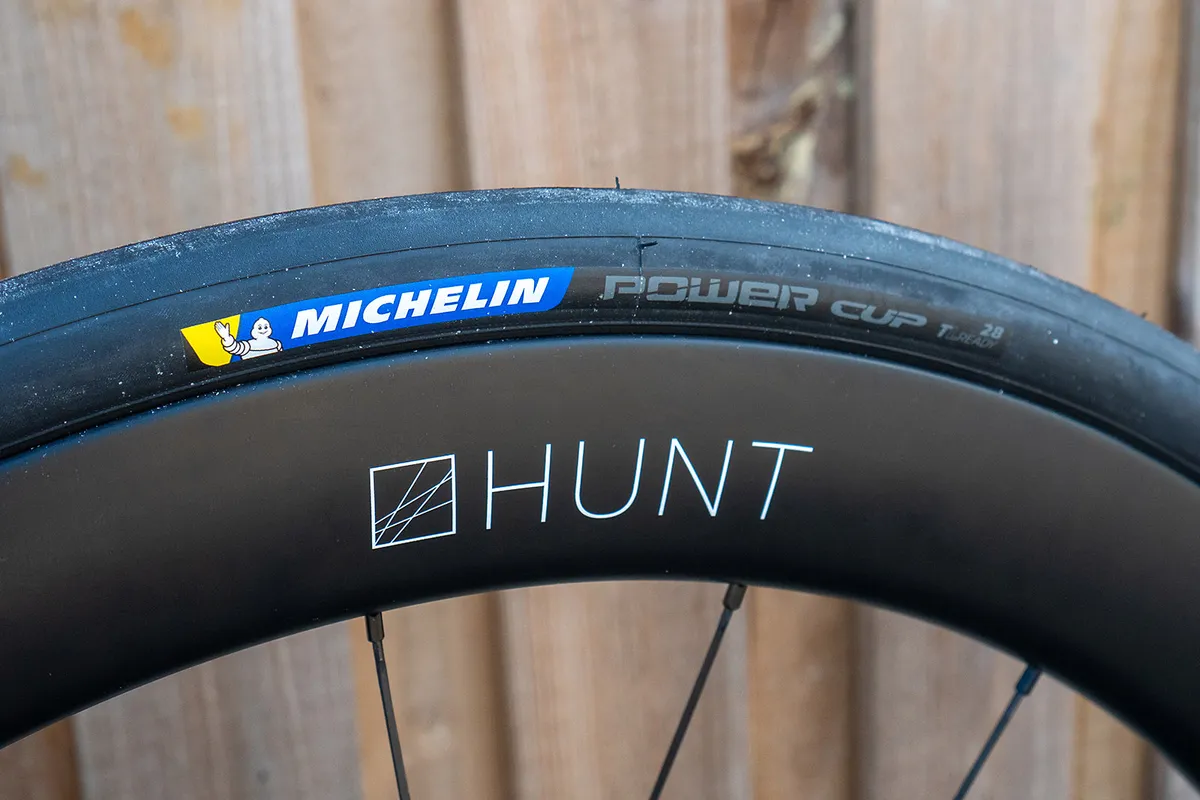
- £70 / $80 / €80 as tested
- Pros: Grippy and comfortable; respectable rolling resistance
- Cons: Poor air retention
The Michelin Power Cup TLR exhibited one of the lower levels of rolling resistance in our Silverstone lab test.
Its grip in corners and supple ride feel contribute to quality performance in the field.
The Power Cup TLR is cheaper than its rivals in the fast tubeless road tyre market. However, disappointing air retention may leave you feeling flat.
Panaracer Agilest TLR
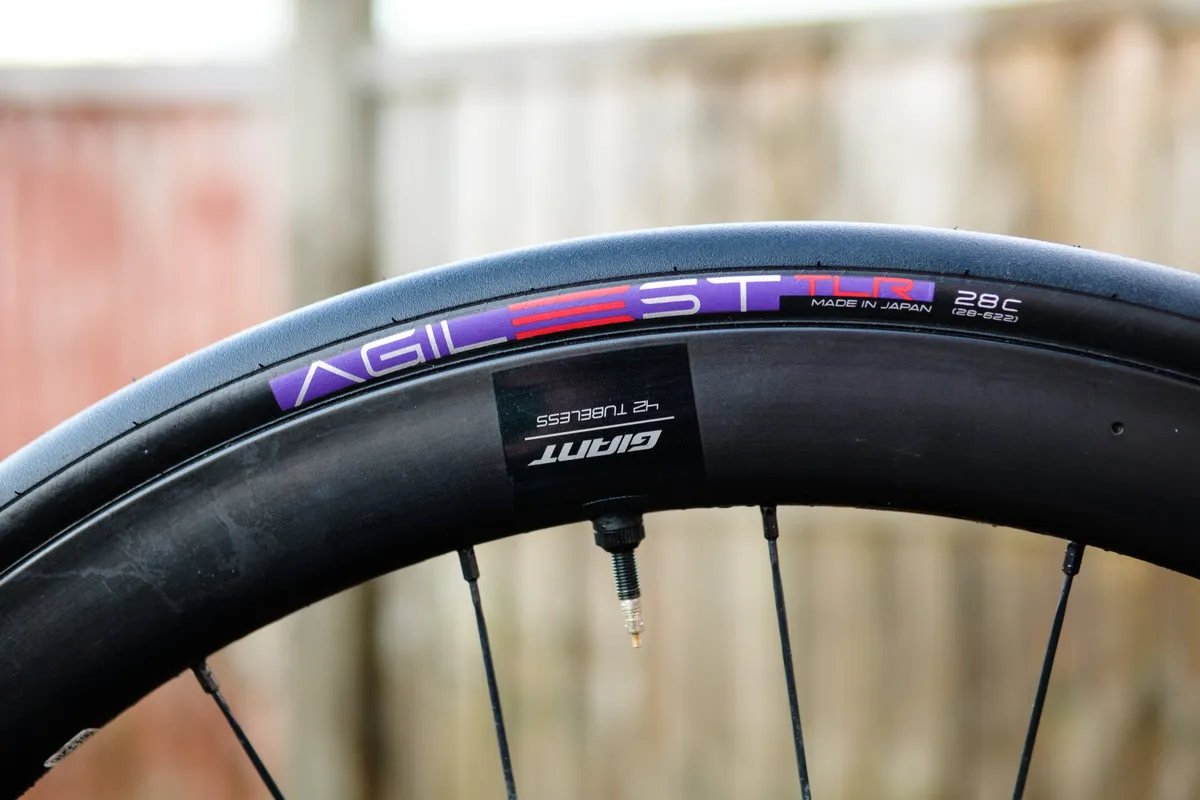
- £60 / $80 as tested
- Pros: Low weight; supple feel
- Cons: Minimal puncture protection
The Panaracer Agilest TLR weighs much less than some of its rival tubeless road bike tyres.
Our indoor rolling resistance testing suggests the Agilest TLR is only marginally less efficient than our benchmark Continental GP5000 S TR.
Ride quality is high at a competitive price. But the Agilest TLR's thin casing and absence of a puncture belt could increase your puncture risk if you ride on poorly-surfaced roads.
Schwalbe One TLE
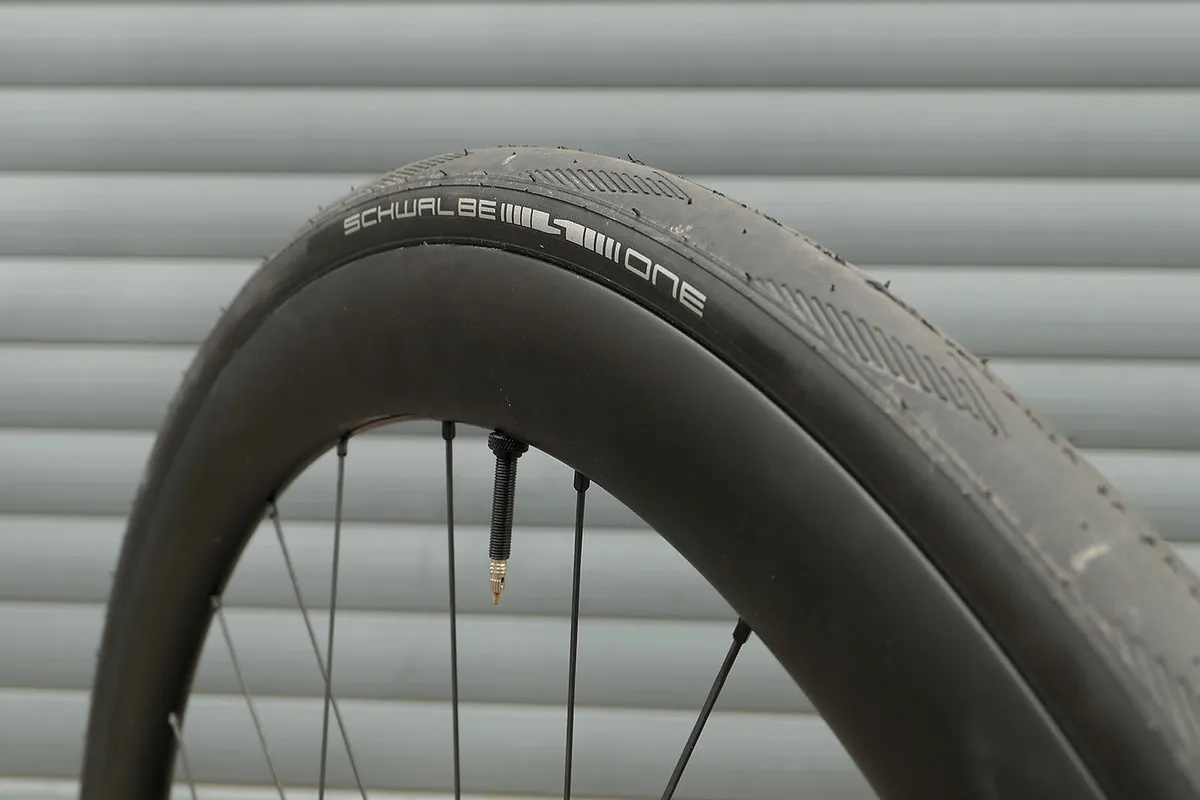
- £62 / $68 as tested
- Pros: Great grip in wet; easy tubeless setup
- Cons: Rigid casing; heavier than claimed
Pitched as an affordable alternative to Schwalbe's Pro One tyre, the One TLE won't win any awards for speed, but it is a durable and affordable training tyre.
The tye uses Addix rubber for excellent wet-weather grip and puncture protection comes in the form of Schwalbe's RaceGaurd.
'TLE' stands for 'Tubeless Easy' and our tester found the tyre lived up to this name.
Specialized S-Works Turbo 2BR

- £55 / $80 / €85 / AU$110 as tested
- Pros: Value for money; all-season speed
- Cons: On the stiff side
For a tough tubeless road tyre that deals with broken road surfaces, the Specialized S-Works Turbo 2BR rolls faster than you might expect.
The American brand's high-end, four-season race tyre was one of the least efficient in our rolling resistance lab test.
The S-Works Turbo 2BR's low price relative to its rivals doesn't translate into poor ride quality. Its casing isn't the most supple, but the S-Works Turbo 2BR still provides plenty of compliance and grip.
Vittoria Corsa N.EXT TLR

- £64.99 / €69.95 / $84.99 as tested
- Pros: Simple tubeless setup; comfort
- Cons: Can't compete with others when it comes to rolling resistance
Being the first Vittoria Corsa to receive a nylon instead of cotton casing hasn't detracted from the N.EXT TLR's performance.
At a slightly lower price than the TLR GR.0, which tops the Corsa range, the N.EXT TLR is grippy, durable and reasonably fast. Yet it doesn't excel in any area.
The tyre should be straightforward to set up tubeless. A choice of six widths from 700 x 24c to 700 x 34c adds to the N.EXT TLR's versatility.
Vittoria Corsa TLR G2.0

- £70 / €77 / $80 / AU$113 as tested
- Pros: The high performance we expect from Vittoria; easy tubeless setup
- Cons: High wear rate
With a graphene-infused compound, Vittoria's Corsa tyres feel as fast as they come. You get a genuine sensation of low rolling resistance no matter how bad the surface, and there’s great grip in the dry.
Tubeless set up is particularly easy and the tyres cope with a wide range of pressures.
On the downside, we found wear rates to be relatively high, with the tread cutting more easily than on others. Given this, they’re probably a better option for fast summer rides than long winter mile-munching, especially given the cost of replacements.
Tubeless road tyre buyer's guide
What is a tubeless tyre?
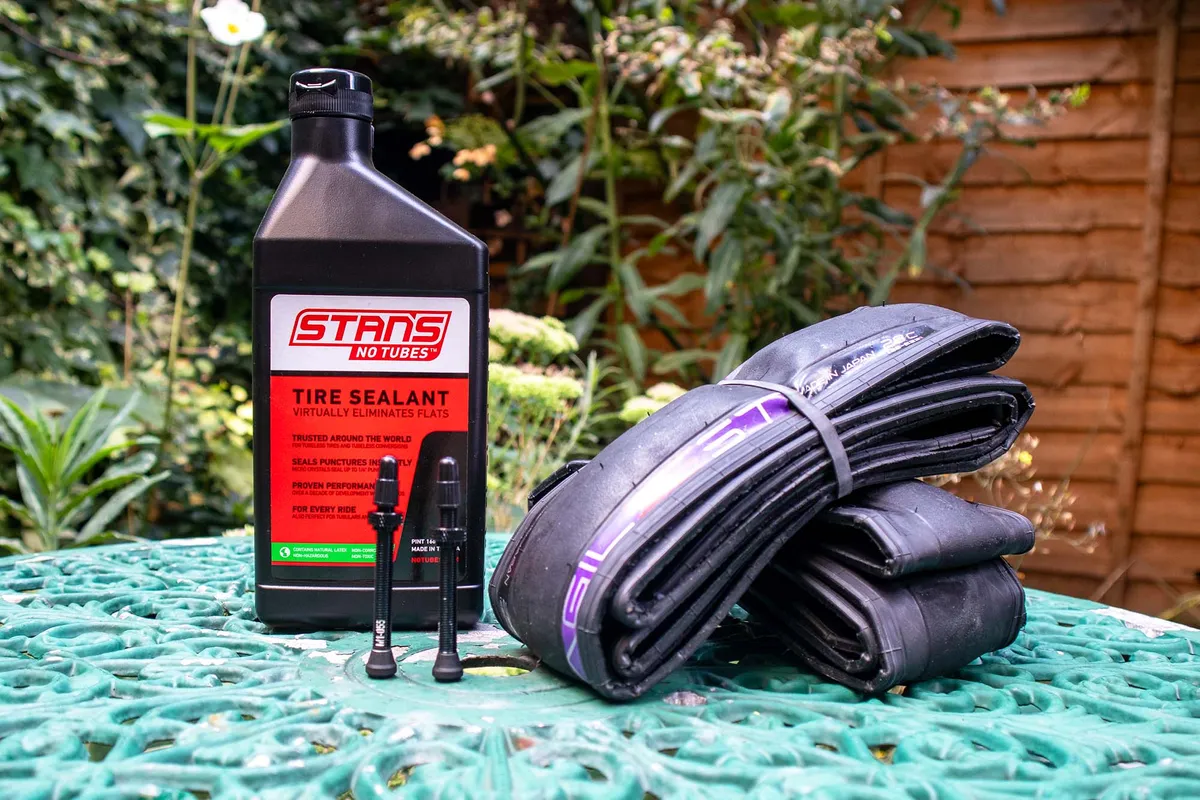
Since time immemorial, road bike riders have used tyres with separate inner tubes. And, since then, you’ve seen them standing by the roadside, bike wheel off, trying to patch up a pin-prick hole in that floppy black rubber ring.
Tubeless tyre technology does away with all (or at least most) of that. Instead of the air in your bike's tyre being held in the inner tube, a tubeless tyre makes an airtight seal with the wheel rim.
To do that, the tyre and the rim are made with closer tolerances than a tubed tyre and wheel, and the rim has a tubeless valve screwed into it to make an airtight connection.
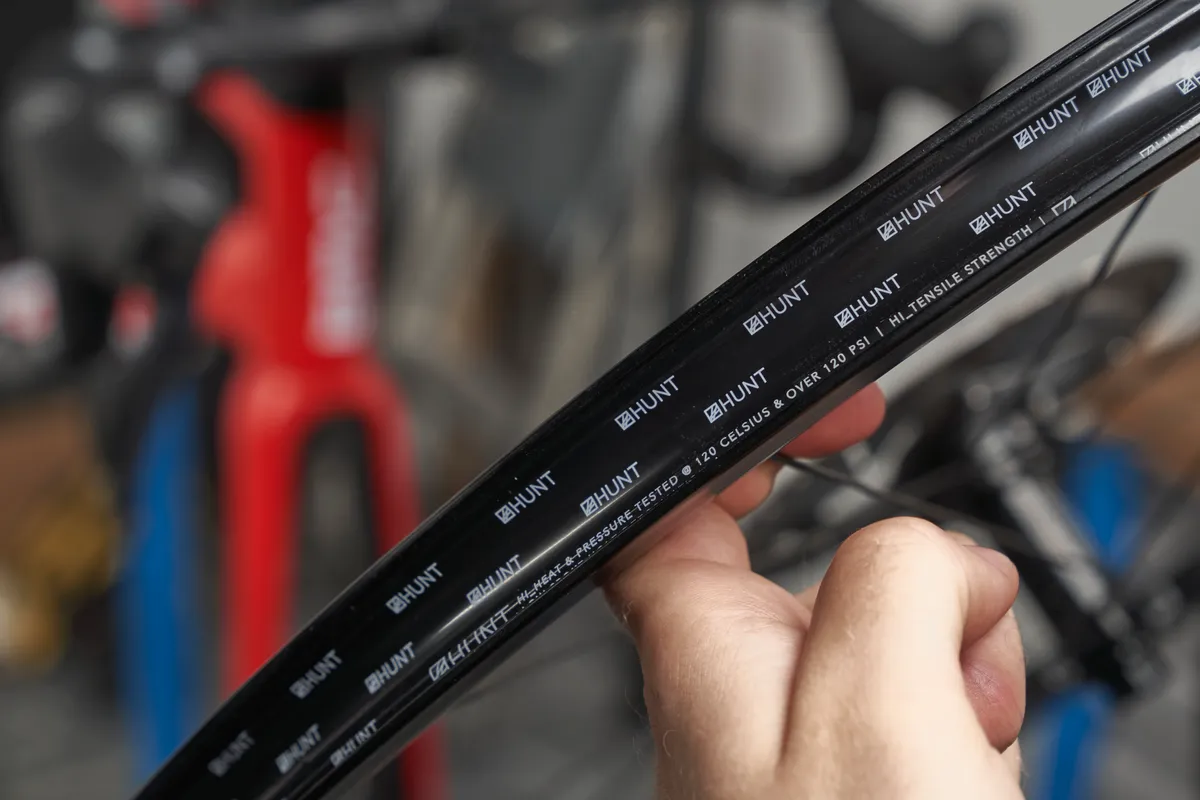
The rim also has to be sealed to keep air in. Some are airtight by design, with no spoke holes in the rim bed, others achieve this using an adhesive rim tape applied to the rim bed.
To make sure air doesn’t leak, liquid sealant is poured inside the tyre when fitting (or injected through the valve).
Tubeless sealant is designed to seal small gaps between the tyre and rim, and deals with the majority of smaller punctures, healing them as they happen.
Tubeless tyre technology is the norm in other tyres, such as those found on cars and most motorcycles. It’s been slow to come to road bikes mainly due to the higher pressures used and the need to sort standards and tolerances.
Should I convert my road bike to tubeless?
Ride quality

Supple: it’s a word that’s repeated time and again in reviews. Without a separate inner tube, the overall thickness of the casing is reduced, leading to a tyre that deforms more easily in response to road imperfections, leading to a more comfortable ride.
Lower tyre pressure
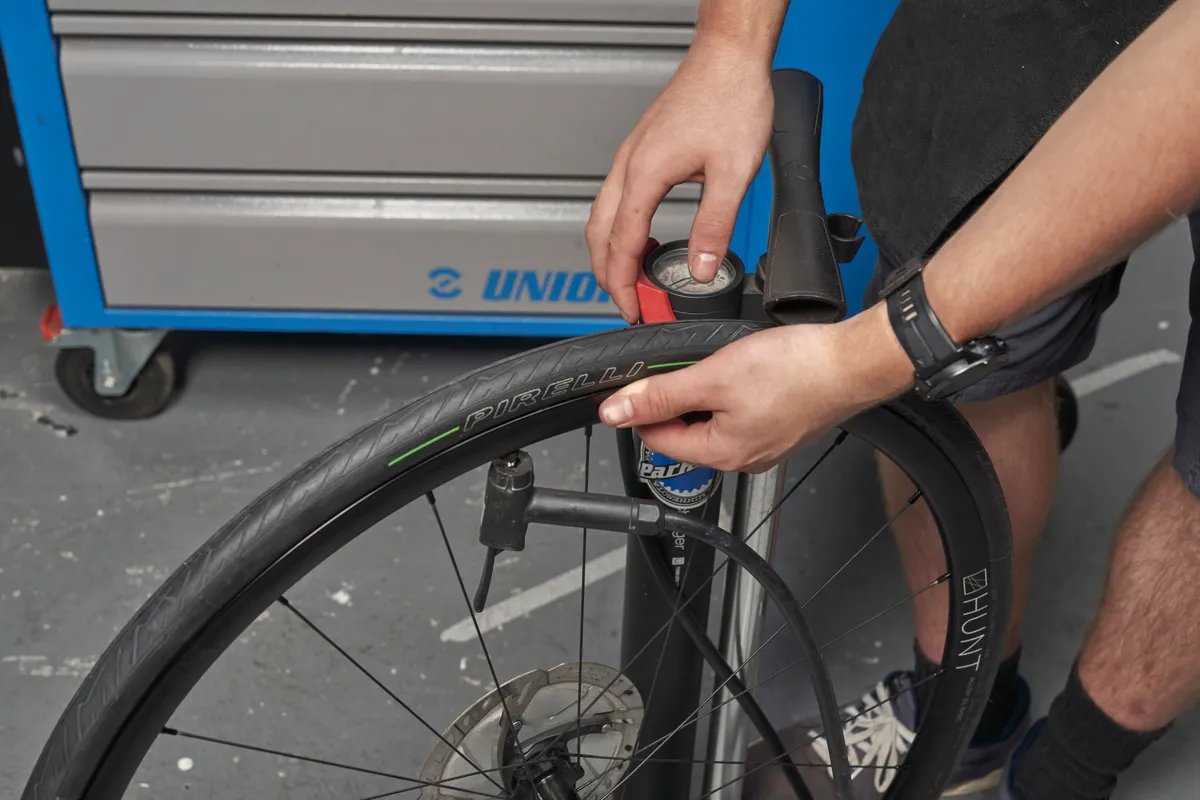
You can run tubeless tyres at lower pressures, typically dropping 5 to 10psi from what you’d run with a tubed setup. That’s because there’s no risk of pinch flats if you run over a rock or other bump in the road. The ability to run lower pressures further improves comfort, too.
Puncture protection
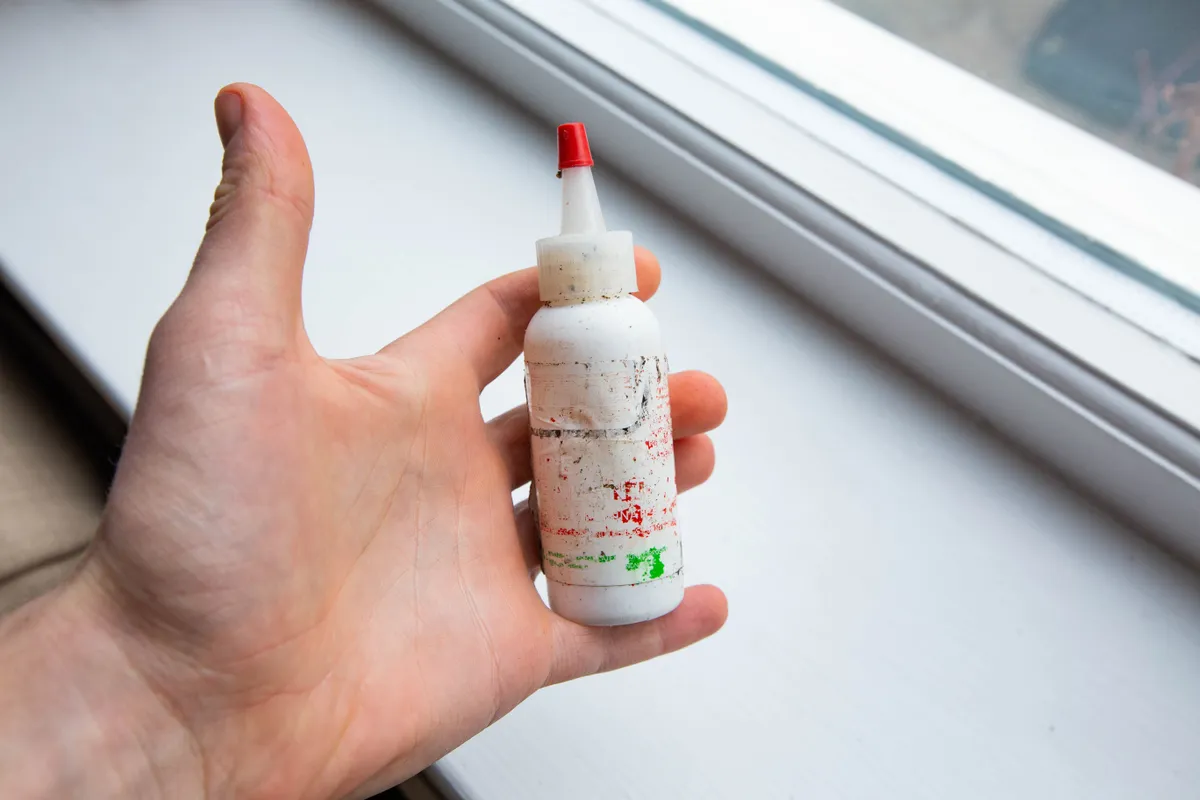
As well as avoiding pinch flats, the sealant in a tubeless tyre protects against smaller punctures, often sealing the hole with minimal loss of pressure in the tyre. So hunting for those pin-prick holes in your tyre is a thing of the past.
But even the best tubeless sealants don't always sort out larger holes or sidewall damage, so it’s still advisable to carry a spare tube and a pump, or a tubeless repair kit, just in case.
If your tyre does get a cut that the sealant can't fix, we've got a guide on how to repair a tubeless tyre.
Lower friction and higher speed
The movement of an inner tube against the tyre’s casing causes significant friction, making tubed tyres slower as well as less comfortable. Butyl inner tubes have the most friction against the tyre; although latex and TPU inner tubes versus tubeless is a closer contest.
With no inner tube at all, and assuming all else is equal, tubeless is usually faster as well as more comfortable to ride.
Reduced rotating mass

Because you’ve done away with the inner tube, you can save a fair chunk of weight with a tubeless setup in some cases. That’s particularly true with the usual butyl tubes; the weight-saving with latex tubes is less, although latex tubes make up for that by being more fragile and leakier.
That saving is countered by the need to add 40ml to 60ml of sealant to your tyre to get a seal and benefit from puncture protection. Also, tubeless-ready tyres are typically heavier than their tubed brethren because they need to be airtight and usually have a heavier-duty bead for safety reasons.
Increased versatility
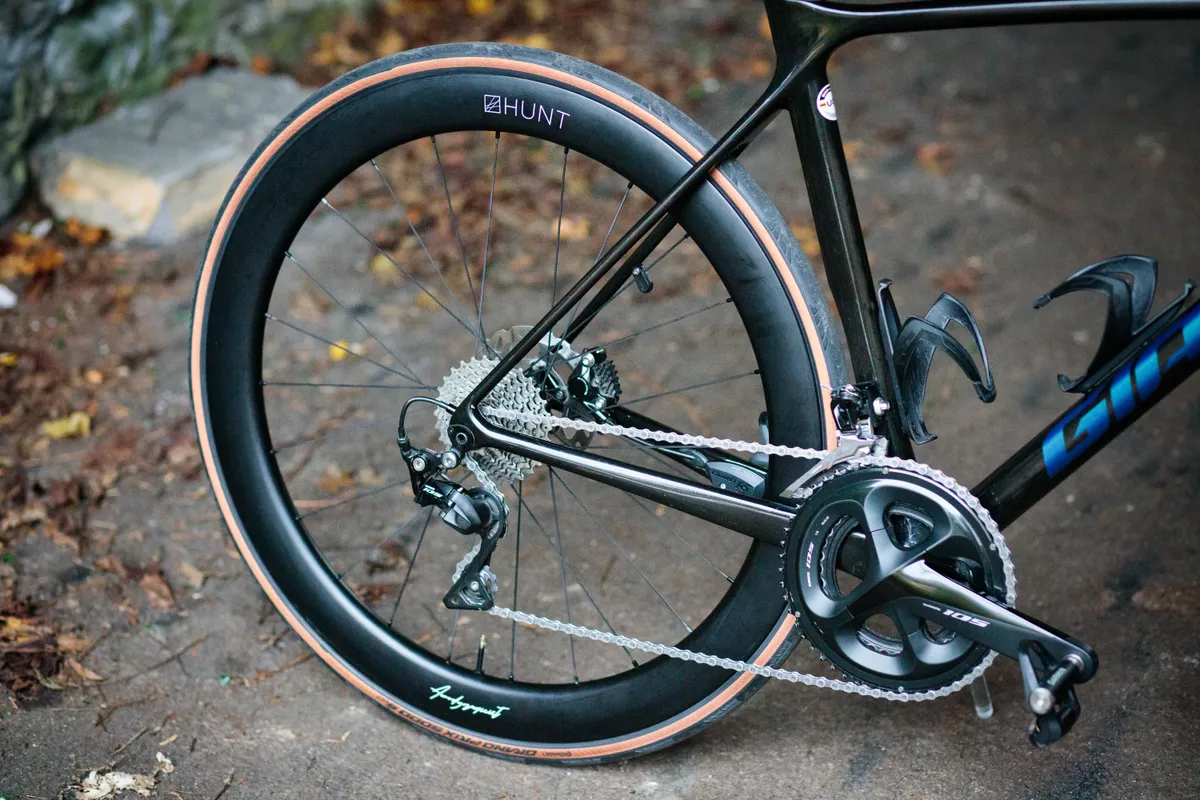
As modern road bikes offer ever-increasing tyre clearances, many tubeless tyres are available in widths above the standard 25mm. With larger air volumes, you can take in even rougher terrain, heading onto gravel trails to up your repertoire of available rides.
What are the disadvantages of tubeless road tyres?
There are a few things to watch out for if you’re thinking about going tubeless.
Tricky set up
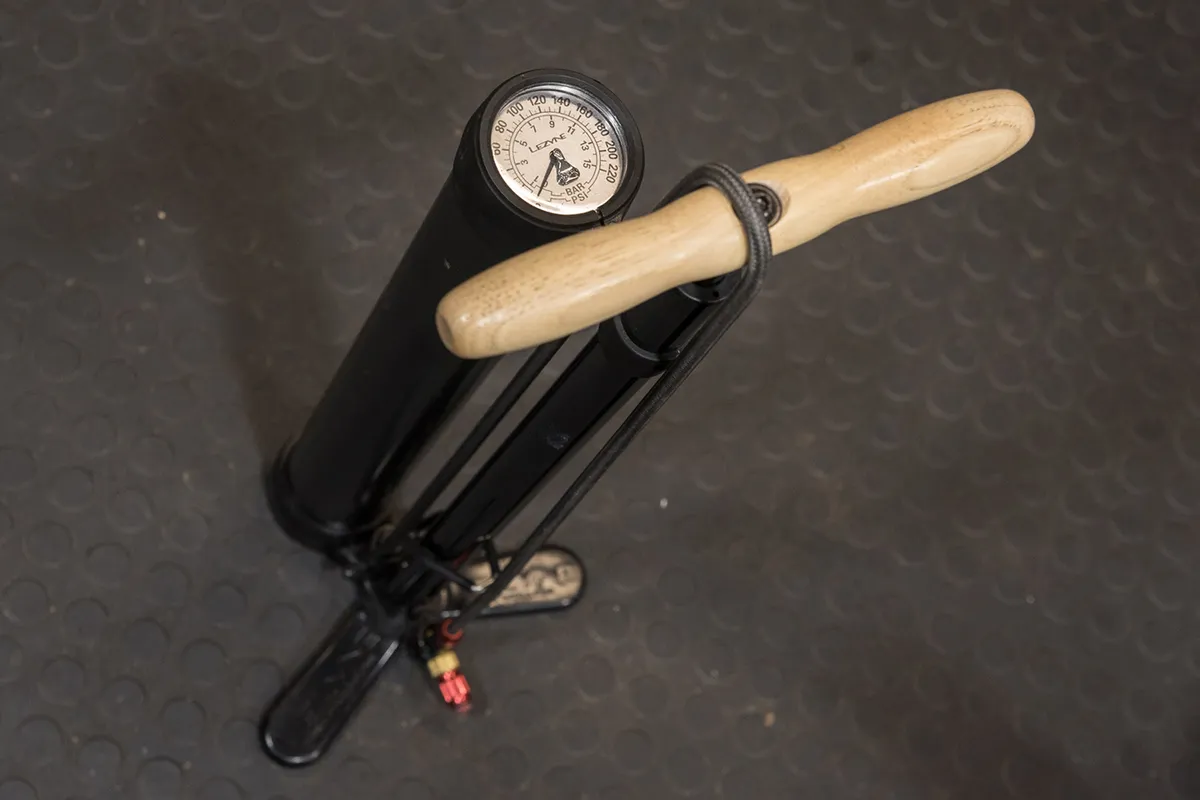
We talked above about the tight design tolerances needed for tubeless to work at road bike tyre pressures. Many tubeless tyres can be set up on a wheel just using a track pump, but as tubeless standards for the road are still in flux, some combinations of wheel and tyre just won’t seat while others are excessively tight. You may need to use a tubeless-specific pump with an oversized air chamber, or a separate booster to seat a tyre.
The former is a pump where you pressurise a reservoir, then release the air into the tyre. That pushes more air into the tyre at higher pressure and faster, seating the tyre on the rim.
For more, read our detailed guide on how to set up road tubeless tyres.
Slow leaks
Once set up, you can often still get slow leaks from a tubeless tyre, due to incomplete sealing to the rim. Spinning the wheel can help distribute the sealant and stop the leak, but, if that doesn’t work, a quick ride up and down the road will often do the trick.
You may need to top up the sealant too, if you’ve lost a significant amount.
Sealant top-ups

The sealant in a tubeless tyre tends to dry out and set over time, so you need to keep an eye on whether there’s any liquid sealant still in there. If there isn’t, your tyre may not stay inflated if you get a puncture.
You need to monitor its level every month or so and keep it topped up. That usually means popping a tyre bead off the rim so you can see how much liquid sealant is left, adding more sealant if necessary and reseating the tyre. Or you can remove the valve core and squirt sealant through it.
Both can be slightly messy but Milkit has a system that lets you suck the liquid sealant out of the tyre, measure its volume, top it up and re-add it to the tyre. It’s a bit pricey but makes maintenance easier.
Non-sealing flats

Tubeless tyre sealant will often fix flats without you even noticing – we've had quite large thorn-induced punctures that would have otherwise stopped us in our tracks that have sealed up without us realising, and with a negligible drop in tyre pressure.
But some holes are too large for the sealant. Sidewall damage is often the cause.
You’ll either get a persistent leak or the plug of sealant will blow out if you have anything above minimal air pressure in your tyre. You might want to carry tyre levers, a pump and a spare tube to swap in if that happens.
Tubeless tyre jargon buster
Thinking about switching to tubeless tyres but confused by some of the jargon? Here’s our guide to the key tyre terms you need to know.
- Bead: The part on the edge of the tyre that mates with the rim. This is specially made on tubeless tyres to help form an airtight seal and is usually a tighter fit than a non-tubeless tyre bead.
- Casing: The fabric part of the tyre that supports the rubber tread. In a tubeless tyre, this needs to be airtight to maintain the tyre’s pressure.
- Hookless bead: A spillover from mountain bike wheels, hookless beads remove the lip from the wheel rim. This allows the wheel to be lighter and stronger, while the tyre-rim interface can be more aerodynamically efficient. But some tyre makers advise against fitting their road tyres on hookless rims because there’s less contact with the tyre and a potentially increased risk of the tyre blowing off the rim. It’s best to check manufacturers’ websites for any compatibility issues.
- Removable core: Many tubeless valves have a removable central core. Take this out and you can get more air into the tyre more quickly to aid inflation. It can also be removed to top up sealant levels if you have a flat or the sealant has dried out.
- Reservoir pump: A pump that stores up compressed air, which you then discharge into the tyre. The higher volume of air pushed into a tubeless tyre at pressure can make sealing the tyre to the rim easier. You can also buy a separate reservoir that fits between a standard track pump and the tyre valve to achieve the same result.
- Sealant: Liquid poured into the tyre, typically latex-based, that helps it form an airtight bond to the rim and stop air leaks from minor punctures.
- Sidewall: The outward-facing edges of the tyre that aren’t in contact with the road surface.
- Track pump: A long hand-operated pump for tyres. Using a standard track pump is often enough to seat a tubeless tyre, although you may need a reservoir pump to get a seal without too much elbow grease.
- Tread: The rubber compound that forms the outer surface of the tyre on which you ride.
- Tubeless-ready wheel: You need a tubeless-ready wheelset to set up tubeless tyres on your bike. Most, but not all, newer wheelsets will be tubeless-ready. They’ll be built to tolerances that mean there’s a close fit to tubeless tyres, which should aid installation. But some may need to have tubeless rim tape fitted to set them up for tubeless running.
- Tubeless valve: Since there’s no inner tube, a tubeless setup has a separate Presta-type valve. This is screwed into the wheel rim before mounting the tyre and has a seal around its base to prevent air loss around the rim’s valve hole.
- UST: Designation and standard for tubeless tyres and rims used by Mavic. Most Mavic wheels are UST tubeless and the brand recommends its UST tyres for use on its rims. UST is a slightly different standard, although other tubeless tyres should fit okay.
